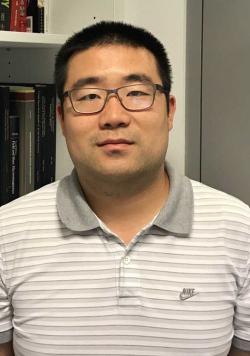It's hard to imagine, but in the 1980s there were no smartphones, iPads, or wireless devices. Everything changed in 1992, when an Australian research team at the CSIRO built a prototype of the first wi-fi chip set.
Since then, there have been many advancements that have made wireless devices more efficient and accessible. But researchers aren't done yet, with many still working to improve circuit design.
One of those is Dr Forest Zhu, whose latest project aims to build the next generation of wireless integrated circuits.
“The aim of my work is to build a hardware foundation for future wireless integrated circuits using a combination of silicon and compound semiconductor technologies,” says Dr Zhu.
It's a wireless world
After Dr Zhu received his PhD in Electronic Engineering from the University of Hertfordshire in the UK, he moved to Australia in 2011.
“Australia has a very strong and successful history in building wireless technology. It is one of the reasons why I wanted to become a researcher in Sydney,” Dr Zhu says.
He joined UTS’s School of Electrical and Data Engineering in 2016 as a lecturer. In 2023, Dr Zhu was named Australia’s top researcher in the field of Microelectronics and Electronic Packaging by The Australian 2023 Research Magazine.
His current research focus is on the design of analogue/mixed-signal and radio frequency integrated circuits for wireless communication and radar sensing applications.
“In our increasingly connected world, wireless technology improves our lives in many exciting ways, but user demand stimulates constant evolution,” says Dr Zhu.
“Since silicon-based technology appears to be approaching its full potential, there is an ever-increasing demand for high-speed wireless transceiver design using technology other than silicon.”
“If such solutions are not found, data transmission rate and energy efficiency will become a bottleneck issue for wireless systems in the 6G era.”
Dr Zhu’s research aims to combat this issue by developing a “systems-in-a-package” transceiver which includes multiple chipsets.
Future fellow focus
To support this research, Dr Zhu was named an ARC Future Fellow. He is one of three UTS scholars to secure funding for projects that are deemed to be of national or international benefit.
“With this funding I plan to build on current 4G and 5G wireless networks and work towards a roadmap to 6G,” says Dr Zhu.
“My plan is to use the “systems-in-a-package” circuit design to test semi technologies and compare their performance. I believe this research will lay the foundation of integrated circuit design for the future of 6G.”
The funding will also enable Dr Zhu to train other students who are interested in studying microelectronics or related subjects.
“There is a skills shortage in this area in Australia, and I hope by doing more research and being able to train more students we might be one step closer to filling this gap,” he says.



